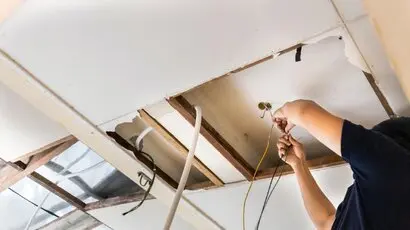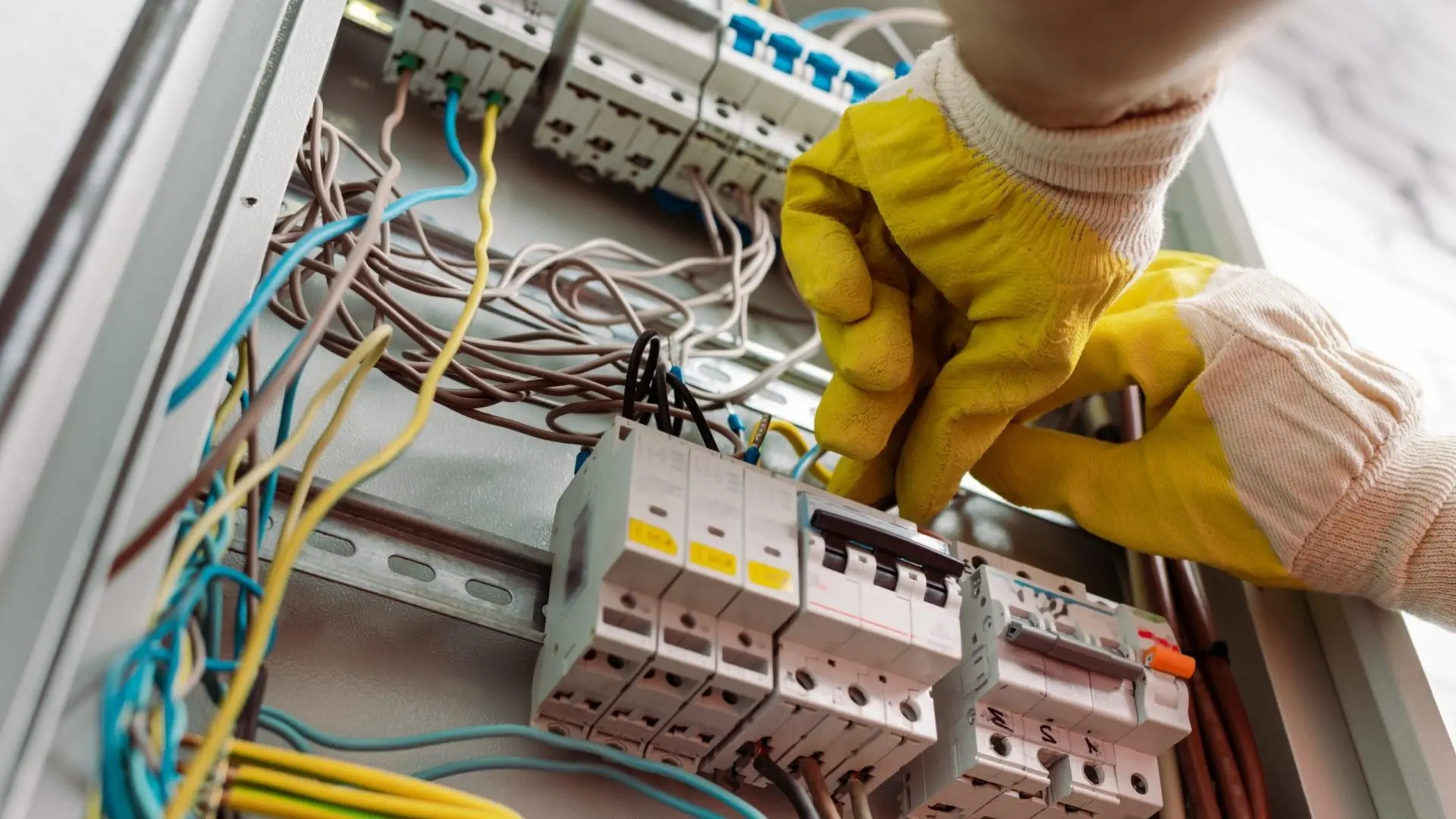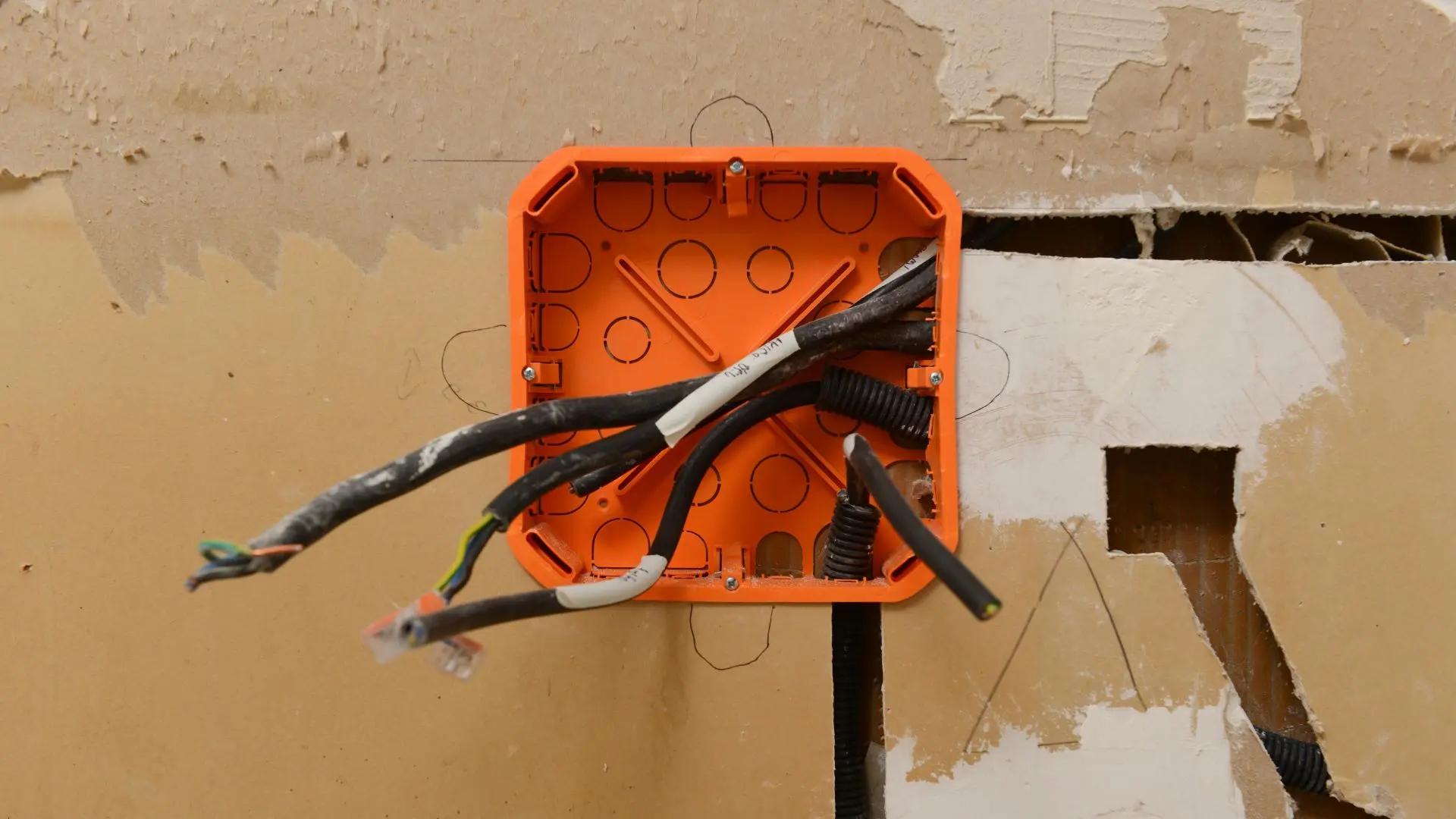
Get your free Melbourne Electrician quote today!
Our team of Melbourne Electricians is here to help you with any questions or concerns you may have. We’re committed to providing you with the best possible service and support.
Electrical work comes with strict legal obligations. Learn how to meet compliance requirements, avoid costly mistakes, and ensure a safe renovation. This guide breaks down essential rules, permits, and professional responsibilities you need to be aware of before touching a single wire.
In 2023, Energy Safe Victoria recorded more than 300 electrical incidents linked to non-compliant renovation work. Many of these resulted in property damage, personal injury, or fires that could have been avoided.
Electrical renovations go far beyond lighting upgrades or new power points; they involve legal and safety responsibilities. Ignoring the rules can result in voided insurance policies, hefty penalties, and criminal liability.
Renovators need to know that the risks aren’t just financial but physical. Before pulling out tools or calling the builder, it’s critical to understand the regulations to protect lives, homes, and reputations.
Why Compliance Matters
Compliance with Victorian electrical regulations isn’t just a formality; it’s a safeguard for your home, finances, and personal safety. Renovating without meeting legal standards can introduce serious structural risks and complicate insurance and resale.
Under Victorian law:
- All electrical work must meet current wiring standards
- Only licensed electricians are permitted to carry out installations or modifications
- A Certificate of Electrical Safety (COES) must be issued for all regulated work
Non-compliance can lead to:
- Insurance claims being denied
- Legal penalties or prosecution
- Delays or failures during building inspections
Electrical faults consistently rank among the top three causes of house fires in Victoria. When systems are designed and installed correctly, every element, like circuit protection, smoke alarms , and cabling, is tested to meet recognised safety benchmarks. That’s not just about ticking off regulations, it’s about keeping families safe and homes legally protected.
Key Victorian Electrical Codes to Understand
Electrical work during renovations in Victoria must follow strict standards to ensure safety, legality, and long-term functionality. The foundational document is the AS/NZS 3000:2018 Wiring Rules , which governs how all systems are designed, installed, and verified

Key compliance requirements include:
- RCD protection : All final subcircuit, especially those connected to cooktops, hot water units, and power points, must be protected by 30ma Residual Current Devices (RCDS). These devices dramatically reduce the risk of electric shock.
- Alterations and additions: Any changes to existing circuits, including adding new outlets or upgrading a switchboard, automatically require RCD installation.
- Wet areas: To safeguard against moisture, bathrooms, laundries, and kitchens must use fittings and wiring with the appropriate Ingress Protection (IP) ratings.
- Smoke alarms: All newly renovated homes must include interconnected smoke alarms in every bedroom and living area.
For high-voltage or complex residential installations:
- Installations must follow AS 2067 and AS/NZS 7000 standards
- Consumer mains must not cross property boundaries and must be housed in heavy-duty conduit, with extra protection where they exit the ground.
- Electrical zones must be mapped at each switchboard if a property has multiple supply points.
All electrical work must be tested for insulation resistance (≥ 50 megohms) and accompanied by a valid Certificate of Electrical Safety (COES). Energy Safe Victoria enforces compliance through inspections, and no work may be energised until all defects are resolved.
Planning Stage: What to Do Before You Start
Electrical compliance begins well before the first wire is installed. Careful preparation at the planning stage sets the foundation for a smooth renovation.
1. Define the Scope of Works
Document every detail of your electrical plans, including the location of new outlets, lighting layouts, appliance connections and switch placements. A clearly written scope helps electricians provide accurate advice and costings from the outset.
2. Consult a Licensed Electrician Early
Bring in a qualified electrician during the initial planning phase. Early involvement helps identify potential compliance issues, avoids rework, and ensures that all components meet Victorian standards.
3. Understand Permit Requirements
Determine if your project requires a building permit. In many cases, changes to structural walls or wet areas trigger the need for certified electrical upgrades. Local councils or private certifiers can clarify obligations based on your renovation type.
4. Coordinate with Your Contractor
Work closely with your builder or project manager to align construction timelines with electrical work. Delays can occur if inspections or approvals aren’t scheduled properly.
5. Notify Your Electricity Distributor
If the renovation impacts the mains supply or meter board, inform your electricity distributor in advance. Depending on your location, this may involve companies like Powercor, Jemena or AusNet.
Hiring the Right Help: Licensed Electricians Only
Electrical work during renovations must be taken seriously. In Victoria, a licensed electrician must complete every electrical task, no matter how small. Attempting unlicensed work is illegal and risks dangerous faults, fire hazards, prosecution and voided insurance.
Hiring a licensed electrician ensures:
- Legal compliance with current Victorian electrical codes
- Workplace safety for everyone on-site
- Protection of your home and appliances from electrical faults
- Eligibility for insurance coverage and future sale of the property
- Professional accountability through regulated industry standards
Before hiring, verify your contractor’s credentials using the Energy Safe Victoria online licence checker.
Make sure your electrician can provide:
- A valid Certificate of Electrical Safety (COES)
- Renovation experience with similar residential projects
- Full compliance with testing and inspection procedures
Engaging a qualified contractor safeguards your renovation investment and ensures the work meets both current standards and long-term safety expectations.

Inspections, Testing & Certification: Non-Negotiables
After the installation is complete, every electrical system must undergo mandatory testing to confirm it meets Victorian safety regulations. These checks are outlined in AS/NZS 3017, the Australian standard for electrical installation testing.
Your licensed electrician is responsible for performing and documenting the following:
- Insulation resistance testing – ensures wiring can safely contain electrical current
- Earth continuity testing – verifies all exposed metal parts are properly earthed
- Polarity checks – confirms that connections are wired correctly to active, neutral and earth terminals
- RCD trip time verification – tests the speed and functionality of residual current devices
Once testing is complete, your electrician must issue a Certificate of Electrical Safety (COES). This legal document confirms the work was completed safely and in line with Victorian regulations.
In some cases, such as switchboard upgrades , new consumer mains, or work involving the distributor, an independent inspection by Energy Safe Victoria may be required before the system can be energised.
Never settle for verbal confirmation. Always request a copy of the COES and keep it for future reference. This certificate may be essential during property sales, compliance audits or insurance claims.
Renovation Hotspots That Require Extra Attention
Not all areas of the home are treated equally under Victorian electrical codes. Stricter rules govern certain rooms and spaces and require more careful planning to meet compliance standards.
Key hotspots include:
- Bathrooms and kitchens – Must use moisture-resistant wiring and IP-rated light fittings to prevent electrical hazards in wet zones
- Switchboards – Require clearly labelled circuits and working safety switches on all power and lighting circuits
- Outdoor areas – Must be fitted with weatherproof outlets and enclosures, suitable for exposure to the elements
- Bedrooms – Since 2023, must include interconnected smoke alarms that activate throughout the home
Addressing these requirements early can lead to failed inspections, costly rework, or delays in receiving certification. These spaces are often where shortcuts occur, so they’re also the first places inspectors scrutinise. A well-planned approach ensures these high-risk areas are legally compliant and function safely for years to come.
Red Flags: Signs of Non-Compliant Work
Identifying dodgy or illegal electrical work early can prevent major safety issues and avoid expensive rectification later. Be alert for the following red flags:
- Exposed wiring or melted fittings near outlets or appliances
- No safety switches installed on power circuits
- Switches or sockets that feel warm or hot to the touch
- Missing COES or incomplete documentation from the contractor
These common illegal electrical work signs may indicate unsafe or unlicensed installations. If you notice any of these issues, contact Energy Safe Victoria and arrange for a licensed electrician to conduct a full inspection and report.
From Plan to Power-Up: Compliance Checklist
Following a structured approach helps keep your renovation compliant and hassle-free. Use this quick checklist to stay on track:
- Engage a licensed electrician before demolition begins
- Review AS/NZS 3000 and understand COES requirements
- Map out a room-by-room plan for all electrical upgrades
- Organise pre-approvals and sync timelines with your builder
- Complete testing and inspections once work is finalised
- Keep your Certificate of Electrical Safety (COES) in a safe place
This electrical compliance checklist supports thorough home renovation planning and ensures every step meets safety, legal, and performance standards outlined in the COES guide.
Don’t Leave Compliance to Chance, Build It In From the Start
Renovating a home brings excitement—and responsibility. At WP Electrical , we specialise in guiding projects through the full scope of electrical renovation services, ensuring every detail aligns with the latest Victorian codes.
Our licensed electrical contractors manage the entire process, from early planning through to final certification, so you don’t have to second-guess compliance or safety.
Avoid costly setbacks and last-minute headaches. Speak with our team about your renovation goals, and we’ll help bring them to life—safely, legally, and on schedule. From the first switch placement to the final inspection, we’re here to power your project the right way
Published by: Pascal Harb17 October 2025